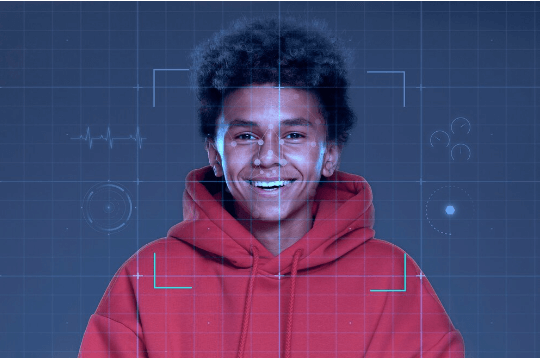The digital revolution makes businesses facilitate enhanced growth and development. Organizations scale their landscape across borders by getting into business relations with the user at both national and international levels. Companies involve investors from all over the world and enhance their business productivity. However, imposters are there to perform money laundering, data breaches, and identity theft. It compels organizations to use satisfactory measures for their security from criminal attacks. In 2022, 57,877 fraud complaints were reported in the United States. Biometric Security systems are in high demand for user ID authentication in remote business processing. It allows companies to practice face spoofing detection and verify users in real time.
Why do Organizations Require Biometric Security Systems?
Biometric security processes allow firms to identify their users in real time and allow secure business processes over the globe. Imposters use stolen IDs to access organizations for various illicit activities. Liveness detection technology helps businesses detect stolen IDs and allows user authentication through artificial intelligence algorithms. The manual process of ID verification can no longer help online businesses as they are not enough to detect modern criminal strategies. Hence, an online ID verification process, such as a biometric security system, is required for real-time user identification and to enhance organizational working.
Other than security, face liveness detection technology helps organizations in scaling its working process. It allows cloud based data storage and record management. However, companies also employ biometric security systems for attendance monitoring and streamline their operations with hassle free management systems.
Working Mechanism Behind Face Verification Service
The face verification process is not a single-step method. It involves various stages to verify user information. Companies employ facial recognition solutions for their accuracy and precise working process. Users feel free to undergo a biometric identification process for its preciseness and quick processing. Companies offer their users various web portals to submit IDs, which are identified through a biometric system. Face verification working mechanism can be addressed as:
Capture
Companies allow their users to undergo hassle-free ID verification processes. Companies offer web addresses for remote user onboarding and business partnerships. Users submit ID documents through online portals. They submit their images in the form of selfies. However, for liveness deception, individual face cameras and scanners capture their images. These scanners work through automatic artificial intelligence mechanisms and capture individual faces in seconds.
Detection
After successful face capture of images, automatic AI algorithms detect facial features such as length of nose, skin texture, depth of iris, and other facial features. Automatic checks are responsible for detecting user IDs and detect facial features to determine spoofing attacks. Organizations utilize biometric security systems to protect themselves from spoofing attacks and deep fakes. However, the algorithms in facial scanners also work for 3D live detection to discourage criminals. It enhances organizational security by providing anti-spoofing measures.
Analysis
After the detection phase, user data undergoes an analysis step. Here, machine learning technology analyzes user facial geometry. After successful analysis , algorithms detect their authenticity to determine whether it’s a real user of spoofed images. It also determines the similarity between data points obtained in liveness detection and from identity documents.
Conversion
Digital processes convert data into machine-readable forms in the form of face prints. These are easy to manage and allow systematic control. Online face verification scanners allow firms to manage digital data in the form of face prints.
Storage
Information obtained from the face liveness detection process is stored in electronic form. It allows quick comparison and is easy to access. Facial patients allow digital storage and make firms free from the hassle of manual data entries and paperwork. The facial liveness detection process is necessary for organizational seamless work processing. It enhances the storage process and allows firms to get rid of manual efforts.
Validation
At last a, all the information stored in digital form is cross-checked across various databases to authenticate user ID. It involves mugshots and sanction checks to ensure that the user has no crime history. Additionally, it provides an extra layer of security and makes organizations secure from unauthorized users. It involves various private and public databases that undergo automatic cross-match of specific information and enables firms to have multi-layered security. Additionally, biometric security systems involve physical features verification, which enables firms to have enhanced security.
Concluding Verdicts
Online face spoofing detection measures are necessary for organizations to streamline their work. These measures allow organizational survival in this age of digitization to protect firms from cyber attacks. However, face identification solutions integrate artificial intelligence and machine learning technology to identify user faces and verify their authenticity. It contributes to organizational security from fraud attacks and allows colonies to have enhanced verification systems. Automatic algorithms serve organizations by providing hassle-free mapping of specific information.



